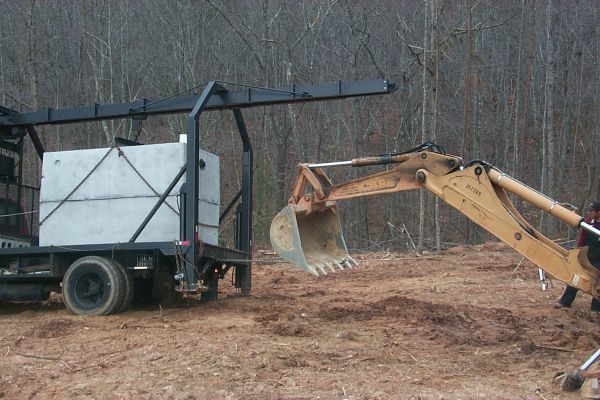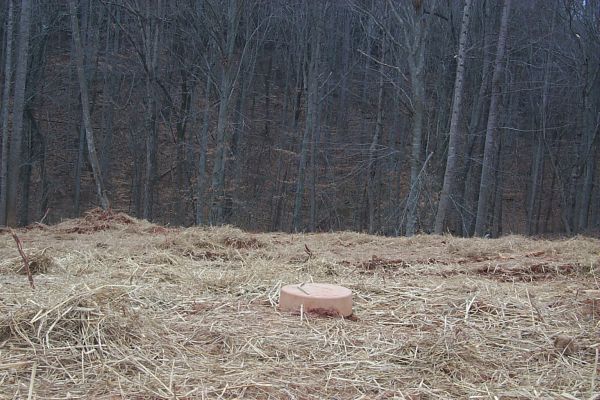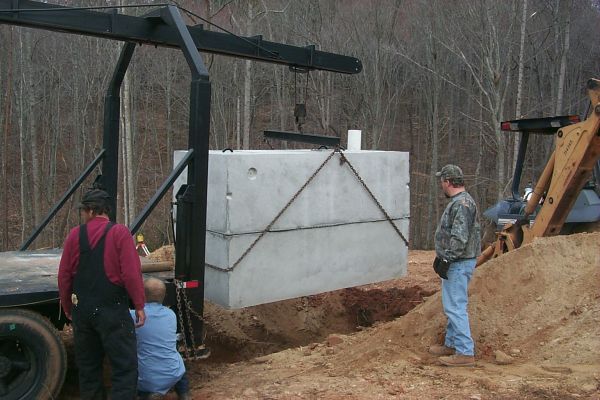
1. The truck that brought the septic tank got stuck in the soft soil and had to be towed toward the septic tank hole using the backhoe’s hydraulics. Notice the chain between the backhoe bucket and the rear of the truck.
It’s hard to think of a more unphotogenic process than putting in a septic tank. But in spite of all the hole-digging and trench-making, the process takes less than a day. Some statistics: The tank holds 1,000 gallons. My system, as spec’ed by the Stokes County environmental health department, called for four drain-field trenches totaling 210 feet in length. Each trench is 50 to 60 feet long.

2. A little closer to the hole

4. The septic tank is now in place.

5. Looking over the top of the septic tank to one of the drainfield trenches

6. The septic tank has been buried, the trenches have been filled. I’ve planted a mixture of annual rye, fescue, and white clover, then covered the bare earth with straw. With the spring weather I hope to have grass before long. The cap is the clean-out port for the drain-field filter. This is a fairly new feature in septic tank design. The filter keeps solids from getting out of the septic tank into the drain field and helps keep the drain field healthy and flowing freely.

